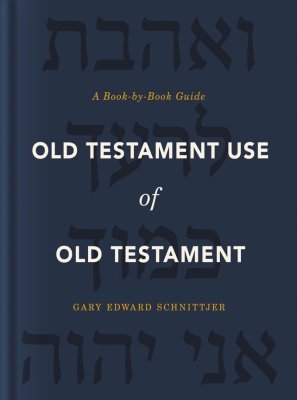Probably one of the things most people notice early when they really begin to study the bible for themselves is how much the bible quotes itself. It might begin with the slow realization that what seems to be a collection of random half-words and numbers on the side or in the middle of the page is actually a bunch of bible verse references, and you might start to look them up. And if you do, you’ll find that nothing opens up your understanding of the Bible like seeing these connections and how they illuminate what the Bible is saying. The deeper you get into it, the more you might start wondering–how could someone even understand the bible at all if they didn’t know all these connections?
It’s really an interesting question to consider: how much biblical knowledge does someone need to understand the bible? Can we, for instance, just hand someone a Gospel of John and expect them to understand what they’re reading?
I recently found an interesting passage that addresses this question in a new book by Gary Schnittjer. He starts off quoting another author…
Ben Witherington III says, “The Gospel story may be told in arcane language and may occasionally quote arcane texts but that language and those texts are now part of a new story…and must make sense without scurrying back to the OT again and again to get the full gist of the story because probably only a tiny minority of the audience…are learned enough and sophisticated enough to catch and then probe the allusions or echoes, or even for that matter to know where to look for the quotations.”
This is a great short answer to our question. at least when we’re discussing the Gospel story, it must be understandable in its essential elements, at face value, when it’s heard or read for the first time. So yes. Hand people the Gospel of John, cold, with no back story. Let God’s word do its work. But then, what of those center column references? This is how Schnittjer connects the dots:
Does not attention to scriptural allusions obstruct the simple gospel? It could, but that is not the point. The Scriptures, like anything else, can be understood in an initial manner without encyclopedic knowledge of backstory and context. Followers of the Messiah need to start somewhere.
At the same time, Scripture consistently advocates a life of meditating upon, studying, teaching, and obeying the Scriptures. The initial testimony of the Scriptures provides an on-ramp to a fuller understanding which necessarily includes interpreting exegesis within Scripture. First-time reading of Scripture offers much even while the Scriptures themselves welcome and invite close study including scriptural allusions by subtle devices.
So it’s both/and. And wouldn’t you expect God’s word to be this way? Understandable, clear, compelling, the first time you hear it–like jumping into a refreshing pond on a hot day–and also, bottomless, always fresh, infinite in depth and variety and complexity and expanse–like a pond that opens up into a shoreless ocean.
 This book by Gary Schnittjer (who teaches at nearby Carin University) is Old Testament Use of Old Testament: A Book-by-Book Guide. It’s exactly what it claims to be: a guide to how the Old Testament authors quoted works by other authors, and other books they themselves had written. So, while many of us have noticed that (for instance) Matthew quotes Jeremiah, have we noticed how Jeremiah quotes Moses, or the Psalms? Realizing that the later Old Testament authors were reading and working with the parts of the Hebrew Bible they already had can be very helpful in understanding what is going on as the Old Testament unfolds. These are some of those on-ramps for getting the fuller picture, the deeper insight, into all God’s word holds for us.
This book by Gary Schnittjer (who teaches at nearby Carin University) is Old Testament Use of Old Testament: A Book-by-Book Guide. It’s exactly what it claims to be: a guide to how the Old Testament authors quoted works by other authors, and other books they themselves had written. So, while many of us have noticed that (for instance) Matthew quotes Jeremiah, have we noticed how Jeremiah quotes Moses, or the Psalms? Realizing that the later Old Testament authors were reading and working with the parts of the Hebrew Bible they already had can be very helpful in understanding what is going on as the Old Testament unfolds. These are some of those on-ramps for getting the fuller picture, the deeper insight, into all God’s word holds for us.
